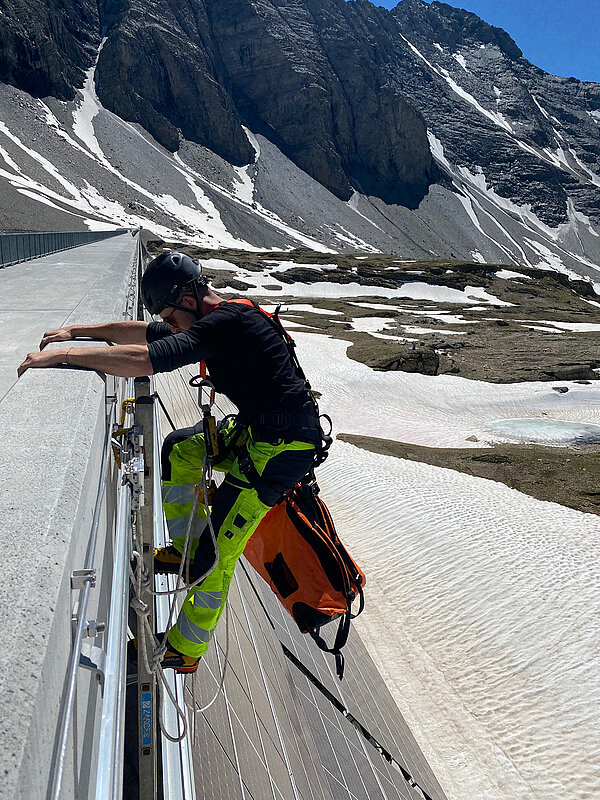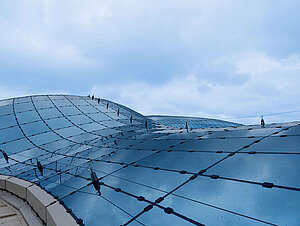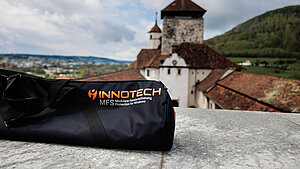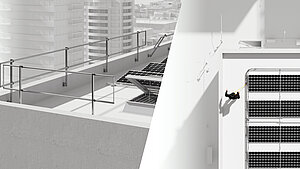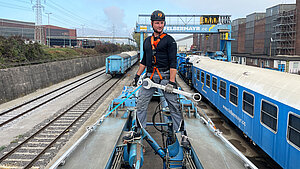Regulation 112-198 of the Deutsche Gesetzliche Unfallversicherung (DGUV) provides a comprehensive guideline to the safe use of personal protective equipment against falls from a height (anti-fall PPE) and of systems to protect from falls. It is aimed at employers and employees who are active in fall-risk areas or in workplaces where there is danger from falls. The regulation contains
- detailed requirements and guidelines for the selection, use and maintenance of anti-fall PPE
- Information about various protection systems (collective and individual protection)
- Details about rescue and protection in the workplace
Basis for the training of all anti-fall PPE users in Germany
DGUV regulation 112-198 contains clear illustrations, advice about maintenance, and practical instructions, in order to describe the correct use of anti-fall PPE (personal protective equipment against falls from a height) and of fall protection equipment. It also contains information about the legal framework and the options for protection via organisational means. The most important aspects and requirements include
- the necessary physical capacity of the employees
- a certain level of technical understanding and/or theoretical instruction
- the practical instruction of the employees (anti-fall PPE training)
- regular maintenance and inspection of the anti-fall PPE
- compliance with the operational instructions and the guidelines of the trade organisations
As per DGUV 112-198, not just the proper way of putting on, but also the user’s own verification of the protective equipment is a prerequisite for the use of anti-fall PPE. In addition, appropriate specialists in work safety must perform an annual expert inspection, in order to inspect the equipment for damage and to estimate the working life of anti-fall PPE.
Under the applicable regulations in Germany, appropriate instruction of all users of anti-fall PPE as per DGUV 112-198 makes an essential contribution to work safety.
Four different fall arrest systems as per DGUV 112-198
DGUV 112-198 defined four different fall arrest systems for protecting people from falls at height. Each system provides different options, and is deployed according to the work environment and working requirements.
1. Fall arrest system with guided type fall arrester including flexible anchorage line:
This system allows the user to move freely around the area, while being continually protected from falls. An example from practice would be a roofer working on various parts of a roof, and using a guided type fall arrester with a flexible anchorage line with lifeline.
2. Fall arrest system with guided type fall arrester including fixed anchorage line:
With this system, the user is attached to a fixed anchorage line, such as a rail system, and this protects him from falls. An example of this would be a worker positioned on a bridge and working along a fixed anchorage line.
3. Fall arrest system with fall arrest device:
This system makes it possible to work at height and to move safely. An example from practice would be a fitter working on a wind turbine and using a fall arrest device.
4. Fall arrest system with energy absorber:
This type of system uses an energy absorber to decelerate the fall and to reduce its kinetic energy. An example of this would be a window cleaner working on the facade of high-rise building, and using an energy absorber.
These various fall arrest systems provide a broad range of protection options for workplaces where there is fall risk. It is important that employers select the correct systems as per the legal provisions and operational requirements, and that they ensure appropriate training of their employees, in order that the systems are used correctly and thus protect the employees from the fatal risks of a fall.
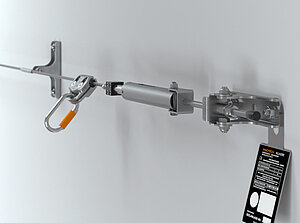
Lifeline Systems AIO
Our powerful AIO lifeline system provides a reliable and versatile solution.
The powerful lifeline system that offers a whole host of variants
Whether on a flat or pitched roof, in an industrial environment, in the energy industry, on poles, or in other application areas, the topic of fall protection is ever-present.
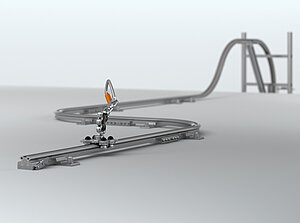
Rail System TAURUS
Curves, pitches, sloping positions, and of course straight runs: the TAURUS rail system is as versatile as the potential areas of application.
The strong and flexible rail system TAURUS
The system provides continuous fall protection along the entire run of rail, regardless of where the fall-risk areas are located or how they are arranged.
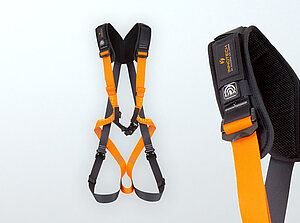
Personal Protective Equipment PPE
Whether on roofs, scaffolding, ladders, facades, or other fall-risk areas, compliant high-quality equipment for fall protection is an absolute must.
Secure connection between user and safety system
Our PPE personal protective equipment creates a secure connection between user and fall protection systems. Depending on application and situation, it provides optimum comfort, and impresses through its top quality.
Theory & practice - anti-fall PPE training
DGUV 112-198 is an important regulation in Germany, and it specifies the safety requirements for working at height. It plays a decisive role in ensuring the safety of employees and in preventing accidents and injuries. However, it should also be noted that although this regulation specifies guidelines and standards, it does not replace the necessity for appropriate training in personal protective equipment against falls from a height (anti-fall PPE).
Anti-fall PPE training is necessary so that employees are provided with the knowledge and skills which they need to use and maintain the necessary safety equipment effectively. The training deals with topics such as selection of the appropriate equipment, its inspection, and the correct way to put it on, as well as the understanding of the restrictions and risks related to working at height.
INNOTECH provides an anti-fall PPE training course which comprehensively deals with the safe use of anti-fall PPE and ensures that the employees are well prepared for the risks related to working at height. You will find further information on the Anti-fall PPE Training page.
